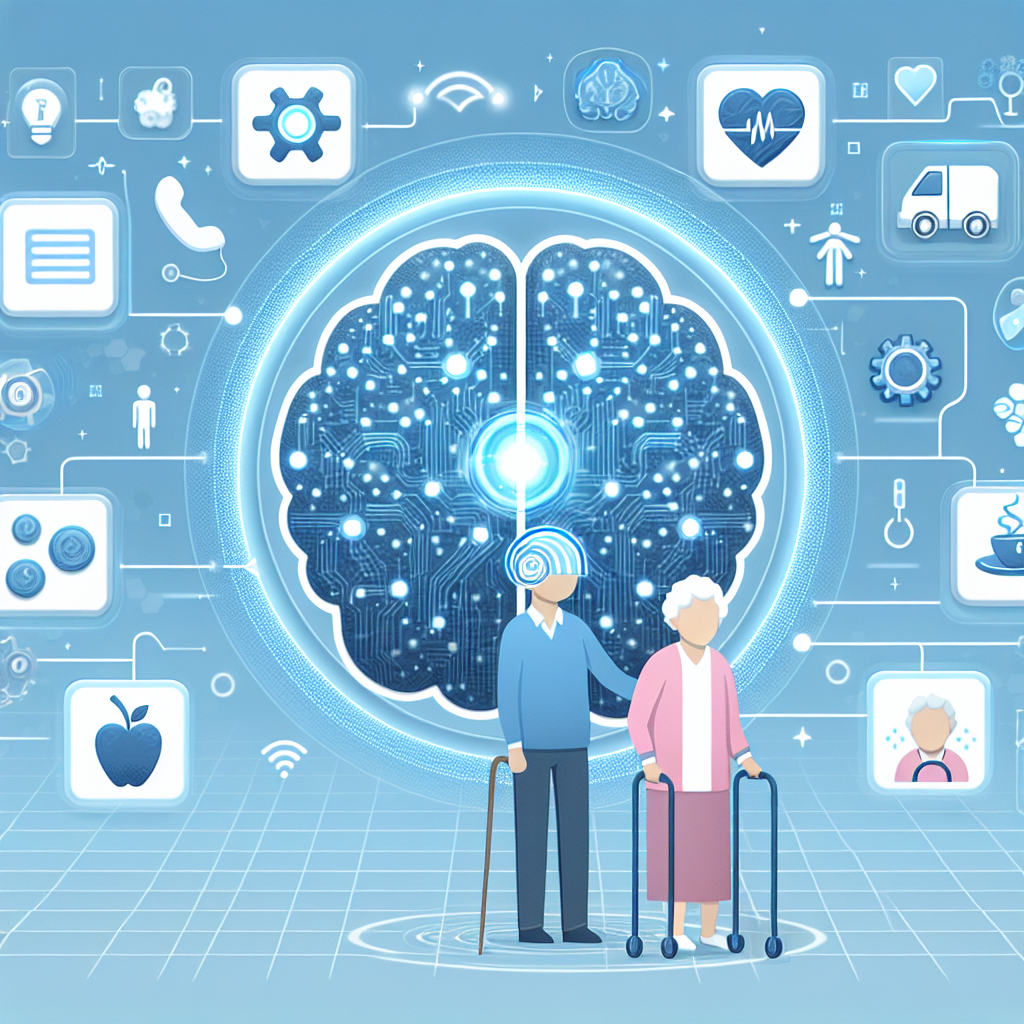The Role of AI Integration in Aging Population Care
The aging population is a growing demographic worldwide, with an increasing number of individuals reaching retirement age and beyond. As people age, they often require more specialized care and support to maintain their health and quality of life. This has led to a growing interest in utilizing artificial intelligence (AI) technology to help address the unique needs of older adults.
AI integration in aging population care offers a wide range of benefits, from improving healthcare outcomes to enhancing the quality of life for older adults. In this article, we will explore the role of AI in aging population care, its potential applications, and how it can revolutionize the way we provide care for older adults.
Benefits of AI Integration in Aging Population Care
There are several key benefits of integrating AI technology into aging population care:
1. Personalized Care: AI algorithms can analyze large amounts of data to create personalized care plans for older adults based on their individual needs and preferences. This can help healthcare providers deliver more targeted and effective care, leading to better health outcomes for older adults.
2. Early Detection of Health Issues: AI-powered sensors and devices can monitor older adults’ health in real-time, allowing for early detection of potential health issues. This can help prevent complications and improve overall health outcomes for older adults.
3. Remote Monitoring: AI technology enables remote monitoring of older adults’ health and well-being, allowing healthcare providers to keep track of their patients’ health status without the need for frequent in-person visits. This can be especially beneficial for older adults who live alone or in remote areas.
4. Medication Management: AI algorithms can help older adults manage their medications more effectively, reminding them to take their pills on time and alerting healthcare providers if there are any issues with medication adherence. This can help prevent medication errors and improve overall health outcomes.
5. Social Engagement: AI-powered social robots can provide companionship and emotional support to older adults, reducing feelings of loneliness and isolation. These robots can engage older adults in conversations, play games, and even remind them of important tasks and appointments.
Applications of AI in Aging Population Care
There are several key applications of AI technology in aging population care:
1. Fall Detection: AI-powered sensors can detect when an older adult has fallen and alert healthcare providers or caregivers immediately. This can help prevent serious injuries and provide timely assistance to older adults in need.
2. Cognitive Assessment: AI algorithms can assess older adults’ cognitive abilities and detect early signs of dementia or cognitive decline. This can help healthcare providers intervene early and provide appropriate care and support to older adults with cognitive impairments.
3. Predictive Analytics: AI technology can analyze large amounts of data to predict older adults’ future health outcomes and identify individuals at risk of developing chronic conditions. This can help healthcare providers develop proactive care plans and interventions to prevent or delay the onset of age-related diseases.
4. Virtual Assistants: AI-powered virtual assistants can help older adults manage their daily tasks and routines, such as scheduling appointments, setting reminders, and accessing information online. These virtual assistants can provide personalized support and assistance to older adults, enhancing their independence and quality of life.
5. Telemedicine: AI technology enables healthcare providers to deliver virtual care to older adults, allowing them to consult with their doctors and specialists remotely. This can help older adults access healthcare services more easily and conveniently, especially for those who have mobility or transportation issues.
FAQs
Q: Is AI technology safe for older adults?
A: Yes, AI technology is generally safe for older adults when used appropriately. Healthcare providers and caregivers should ensure that AI systems are secure, reliable, and compliant with privacy regulations to protect older adults’ health information and data.
Q: Will AI technology replace human caregivers in aging population care?
A: AI technology is meant to complement human caregivers, not replace them. While AI can automate certain tasks and processes, human caregivers play a crucial role in providing emotional support, companionship, and personalized care to older adults.
Q: How can older adults benefit from AI integration in aging population care?
A: Older adults can benefit from AI integration in aging population care by receiving personalized care plans, early detection of health issues, remote monitoring, medication management, social engagement, and other support services to improve their health and quality of life.
Q: What are the challenges of implementing AI technology in aging population care?
A: Some challenges of implementing AI technology in aging population care include ensuring data security and privacy, addressing ethical concerns, training healthcare providers and caregivers on how to use AI systems effectively, and ensuring that older adults are comfortable and willing to interact with AI-powered devices and robots.
In conclusion, AI integration in aging population care has the potential to revolutionize the way we provide care and support to older adults. By leveraging AI technology to create personalized care plans, monitor health in real-time, and provide social engagement and support, we can improve the health outcomes and quality of life for older adults around the world. As AI technology continues to advance, we can expect to see even more innovative applications and solutions to address the unique needs of the aging population.

